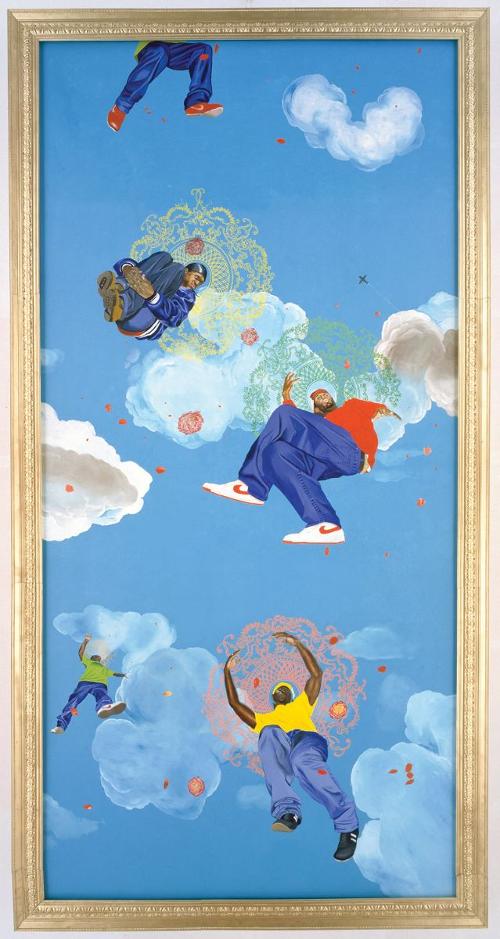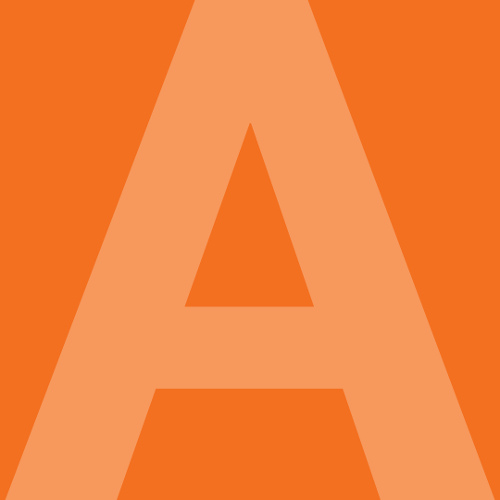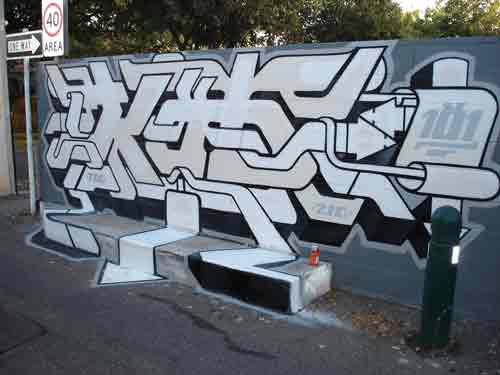.jpg)
Melbourne Now makes an argument for a form of convivial poetics with more than 175 presentations showcasing the city's creative practitioners from art, architecture, industrial design, jewellery and fashion. Prominent amongst those presented are researchers working with theories such as New Materialism. Bianca Hester’s Hoops: Sound texts, performances, documents 2011-13 is an example of the way materials, spatial practices and sociability can combine to provide new poetic views of the city.
Relational aesthetics posits all work in terms of its relationship with the viewer. Art is not a representational commerce but a state of encounter. A form is a lasting encounter. The changing of the guard at the NGV has opened up the institution to these kinds of questions. Popularity, influence and territory are now unashamedly a more prominent part of the mix. Collaborations (temporary and established) are in. Art is a numbers game. Curators are flexing their muscle. Everyone is developing a pitch. NGV curator Max Delany says that experimental spatial playfulness connects art directly to the experience of everyday life.
The table tennis in the foyer of NGV International heralds the participatory theme by enacting a staging of social relations. A disco dance floor For You by Darren Sylvester comes in flashing colours market tested to suit the most people and hoops for shooting goals with crumpled paper entice participants into (offputting?) exhibition spaces. Relational aesthetics promulgates conviviality. Reality is what you talk about with a third party. It is a product of negotiation. Imagination is a prosthesis affixed to the real to produce interlocution, said Nicholas Bourriaud. Melbourne Now steps casually into this terrain.
Much could and will be said about Melbourne Now (see pages 70-71 this issue of Artlink for more views). Who was included and who was left out? Were the artists paid? Twenty curators were hired for the show and hundreds of practitioners were involved, many drawn from the universities close to the NGV. Artefacts such as paintings and drawings, traditionally executed by a sole practitioner in the safety of his or her cell, are less prominent than gatherings - of like-minded things in Patrick Pound’s Gallery of Air or of fragments of broken desire in Claire Lambe’s Shhh, Men at Work. Even garden stakes come in pleasing little groups (in Spiros Panigirakis’ Garden States) and the figure in Rick Amor’s looming landscape has an i-phone to keep him connected. The Hotham Street girls are reminiscing in At Home about living together and Christopher Ng Hill has worked with 13 friends in Free Temporal Groupings to throw around clothes on the NGV floor.
The exhibition could be seen as an idealistic manoeuvre to counter the Neo-Liberal system that turns artists into brand names that can be bought and sold by dealers and institutions. Entry to this exhibition is free. An estimated 200,000 people attended in the first two weeks. Anastasia Klose has taken advantage of the projected figures by setting up a One Stop Knock-Off Shop, selling t-shirts and coffee mugs to the public. She, in turn, is a product of the Victorian College of the Arts. These negotiations are complex. They can be tiring. A mug lettered with Quiet Desperation is at least personable, as is the artist at close quarters. (She does enjoy a pun.) For those seeking relief from the chatter there are some punky little material moments in Jake Walker’s simulated paintings and Alasdair McLuckie’s hand-worked Sculpture people. These works enclose emotional space, with hessian and tubular forms in the first, and pen on bindersboard in the second, instead of dissipating it. Loyalty is one name for practices that last.












